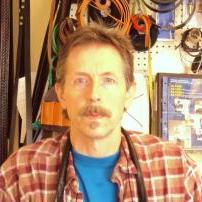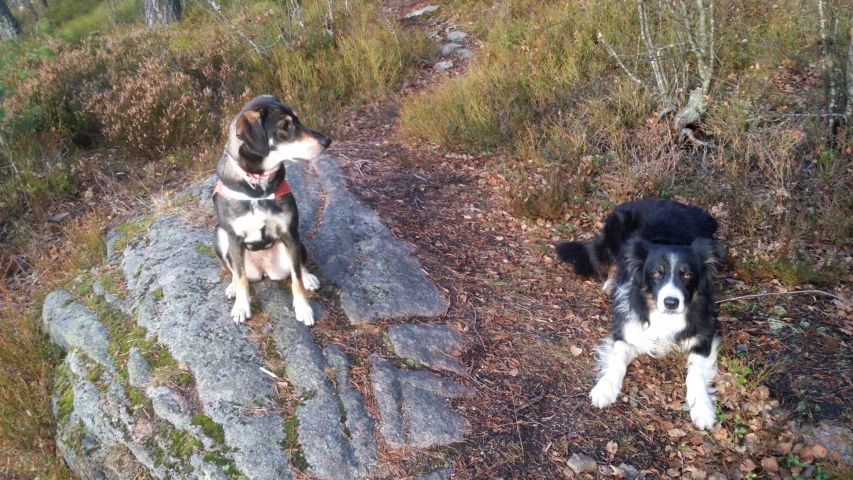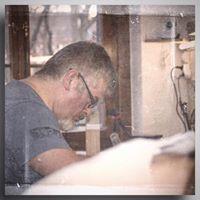-
Posts
1,591 -
Joined
-
Last visited
Content Type
Profiles
Forums
Events
Blogs
Gallery
Everything posted by Trox
-
Thank you Colt, Tandy would not be a reference I would know about. I do not expect them to be as good as old stock, but to be of tempered tool steel and not bend. You are talking about their oval puches? Thanks Tor
-
Thank you Thor! obviously they aren't for the screw in pliers, stupid of me to think they where. You would not be able to position the tube correctly with out shimming it in. I would have to buy that special revolving plier to fit them. Guess I have to stock up on some new oval hand held small punches. I am a bit skeptical to the new Blanchard ones, I bought a new one that was to soft. perhaps it was just that one punch who was bad tempered. Dixon stopped trading and I have not tried the new Osborne punches (only old stock who are good) It's really difficult to find really good punches today. And small sizes are always more delicate. Thanks for the links, I will check them out properly later. Back to work. Tor
-
Ha Ha Back to the old sayings... everything that's to good to be true........ I wasted my time reading true four pages just to see this crap A leather work shop need all kinds of different hole punch, I use both hand held punches, pliers (rotary and straight single tube) and press machine. I got to be able to do all kinds of jobs. By the way Thor, where can I buy these oval screw-in rotary tubes. And what kinds of pliers do they fit. I have several different hole punch pliers; old stock US,English and German made. included a unmarked CSO look-a-like that I am very pleased with. Bought secondhand on Ebay, so I do not know where it's made. Thanks Tor
-
Hi, do you use brass or magnesium plates in your clicker press. I have tried some delerin plastic plates in mine. However, I'm not satisfied with their impression (to deep). The company you are using (Owosso)do they serve overseas customers? And how are they on price. Thanks Tor
-
A hand held unit would be more versatile, you can use it on larger objects.Tor
-
I have many different style/types of edge bevelers, my favorite are the old stock Osborne / Gomp fine edgers. Why don't you take a look at what Bruce Johnson selling at his site.Tor
-
Ever tried Blanchard edger? that's the one tool they make that is not worth spending money on. Stick to US made models on edgers, they work much better. I am talking about edge bevlers and not French edgers.Tor
-
You could simply buy a finished knife from Blanchard http://www.fineleatherworking.com/leather-tools/indispensable-knife Or https://www.rmleathersupply.com/collections/vergez-blanchard-tools/products/l-indispensible-brass-knife-2-blades Or in Europe http://www.vergez-blanchard.fr/boutique/liste_rayons.cfm Tor
-
Yes Stuart, I agree with you and now it's no point in contacting the company. And you did the right thing to post about it here. The fact that a big company are selling worn down equipment and as refurbished should be known to all. When CoryLeif also experienced issues it seems to be more than just a "crack" in their quality control. And Yes Eric, there is no doubt about it; this machine was not touched at all. I saw some of your pictures and it did not look any good. By the way, you did a good job with both the machine and the topic. To bad that they keep on doing stuff like this, I looked at their website and they had a lot of new stuff I would like take a closer look at. New stuff, like reasonable priced brass embossing roll. However, I do not like to deal with companies that I cannot trust. Tor
-
If that was my company I would offer you my sincerely apologies and give you an other machine. Bad publicity can be very expensive, this forum have many reader that's in their targeting group. Anything less would be shortsighted. Tor
-
Venator, I have a question. Has Nick O Sewing been made aware of this machines condition? has he not offered to take back an repair the machine? or perhaps swap it out. When it comes to these types of Adler machines Like the 467, 767 and the Duerkopp 290, 291 (if made after 1990 all called Duerkopp Adler) These are all high speed machines (tripple feeds) that commonly been used in factories. Therefore I would check them extra carefully before I buy them. I understand that Nick O Sewing is a company that often buy up factory lots. If it came from a closed down production the machine could be overhauled and still in use . Or its a old swapped out machine that came on the lot. This machine will at least be 36 years old or more, that's why I do not understand how somebody can assume it's alright. What's left on a factory high speed machine after 36 year in a factory? It is a Adler, but still. You cannot just assume 36 years old factory machine is okay! It's a machine with a design that looks very modern for its age,(it's very modern too) it's easy to mistake it for a much newer machine. Perhaps, that makes them easier to sell. Nevertheless, it's old. Anyway, a big company like Nick O Sewing must have some routines on machine buy and sell, they would have to log it's history. A normal thing to do is to take it back and repair it. You cannot expect the company to do anything else or can you?
-
I will agree with my German name brother above, it's a matter of taste and how much material you want to remove. I have many different style edge bevlers, my favorite are the old CS. Osborn fine edgers. (HF. Osb and Gomp and many other made the same style) I have five sizes of them, #1 to #5. I just pick up one try, sometimes I want to remove more and sometimes less. It's not always constant to thickness, but will vary just as much of type of leather. Sometimes I use two different edger sizes on the same thickness, bevels several times. When it comes to leather edges we all have our own techniques, favorite products and tools. There are no exact rules when it comes to leather edges. Somebody could easily write a book on the subject alone. I am not familiar with Barry Kings sizes. I do just fine with 5 sizes for a variety of work. If I had to choose only three sizes of the ones I have, it would be #1, #3 and #5. Tor
-
Nice job!
- 8 replies
-
- leatherwork
- handstitched
-
(and 3 more)
Tagged with:
-

Double Needle Machine For Double And Single Stitch?
Trox replied to ken sungela's topic in Leather Sewing Machines
Dropdown guide with a center guide is a helpful tool for sewing nice French seams. For keeping a constant distance from the center, both for single and double needle machines. Tor -
It's scary how some dealers use the term "refurbished" today. It's not common to see a Adler machine that mistreated. I live in a country where Adler are more common than Singer Industrials, so I have seen a fear share of them. It's strange that a large company like that have such poor quality control. Tor
-
Most beginners have a limited budget, what's your? If you should sew holsters you will at least need a Juki TSC 441 or a Adler 205-370 clone. Most reasonable machine that do the job will be a short arm 441 clone like Cobra 3 or Cowboy 3500. They are all tripple feed cylinder bed machines that will sew 7/8 of an inch with heavy threads. You have a new cheaper option too, the cowboy 3200 that will sew up to an 1/2 inch (tripple feed, cyl bed and heavy threads) Buying from one of our forum dealer would be the smartest option. They will ensure you service, warranty and most important; support. If you are an very rich man you could buy the new Duerkopp Adler 969 H, who is the "Rolls Roys" of leather machines today. Or perhaps A Campbell Randall Needle and awl high lift. However, that's hardly a beginners machine, but it will lay down a stitch more beautiful and powerful than anything else. The options are many if your budget is unlimited. Myself, I started on the bottom with hand sewing, old cheap machines and eventually ended up with an a Juki 441 clone/Japanese hook and Efka 1550 motor. That is all the machine I need for heavy stuff, I will use it until it breaks down. That is if it breaks down, I do have several other smaller machines and I cannot use them all at once. Therfore, the runtime on it will be limited; I doubt I ever will be able to wear it out. I choose the 441 clone because of its power, superior high foot lift, long arm and it's heavy thread sizes. An important factor for me was the easily available and quantity of attachments for it. They are available for reasonable prices too. If you take a look at what original Duerkopp Adler attachment cost you will understand. However, now a days aftermarket attachment are available for DA Machines/clones too. When I bought my machine there was only a few. If you are going to sew a variety of different jobs like me, you will need a lot of them. Different needle plates and presser feets. Take a look at what dealers offers on included attachments, these are expensive buying alone. There are good deals to be made for those who do they research well. Check what type of servo motor and/if speed reducer (depended of motor brand, some motors do not accept speed reducer). Search the forum on servo motor reviews, there have been some issues with Chinese servo motors. Good Luck Tor
-
For all those who have asked me for the Juki TSC 441 adjustment manual and partlist. I have just managed to recover these manuals from a broken down PC and uploaded them here. Free for download for our members personal use. Enjoy Tor TSN-421&TSC-441EM00_e.pdf ai0cjh00.pdf
- 2 replies
-
- cowboy 4500
- cobra 4
-
(and 3 more)
Tagged with:
-
When we talking about Blanchard history. The competition, the "Mayer Flamery Paris" (or "Ferdinand Mayer Paris" like some of his tools was stamped with). He was a former master from the Blanchard workshop. He quit his job with Blanchard and stole with him their model and client list. That's the reason for their tools similarities. He was later convicted in court for that. He still managed his company to survive, making his popular Splitting and skiving machine. I am not sure, but I think is was his version of the Spitlers Patent splitting lapskiving Machine (CS. Osborne # 83). Correct me if I'm wrong. I do have the Osborne # 83 machine myself and some of our members have the Mayer Flamery machine. I do think Walter Roth has one and pictures is posted in this forum/topic "tools of a Swiss Saddler" The machine is a bit different, it's a beautiful machine that sold very well. I understand why it was popular. The Mayer Flamery company lasted from 1900 until 1960. However Mr. Ferdinand started a cutlery before that, around 1870. His tools was then marked with a little horse. Tor
-
Hi, I have several old Blanchard knifes and other types of tools. Non of my old Blanchard round knifes has a logo like yours. However, I do have a Cornett (French pattern quarter moon knife) with the same mark (and handle material). All my other Blanchard knifes have the dog under the company name, some with a curved "Blancard" and some with the straight "Blanchard" stamp. I have one with "6 medals" stamped under "Blanchard" "the Greyhound" and "Paris". Some tools have only "Blanchard". The particular large roundknife (7") with "6 medals) under the logo (has a ebony handle, who is pretty common on old large Blanchard round knifes) should be possible to date pretty accurate. Since we know that the company have received 7 gold and silver medals in total for their tools. The first date of foundation for the Blanchard company is 1823. 1828. Mr. Louis Rene Blanchard make Cutlery in 37 Rue des Gravelliers, Paris. 1842. Mr. L. R. Blanchard goes into partnership with Mr. V. J. C. Mercier. The Company becomes "Mercier Blanchard & Cie" (Cie= Co) 1844. Mr. Louis Hippolyte SIMONIN succeed in getting Mercier´S permission to brand some or all of the tools with "MERCIER" or "MERCIER-BLANCHARD" or "BLANCHARD" In the years after that Mr. SIMONIN changes several business partners. 1866. SIMONIN parters with Mr. Stanislas FREZARD and the name becomes "SIMONIN dit BLANCHARD & Cie" The first time the name "VERGEZ" was mentioned was in 1910. It look like it was a company (Brand name) that Mr. SIMONIN BLANCHARD bought that year. Then again, my French is not that good so I'm not sure how this played out. I cannot find any exact date for when the brand "VERGEZ BLANCHARD" started to appear on some of the tools. Some new tools has today only "BLANCHARD" stamped or etched on to them. Anyway, it looks like your knife has a rosewood handle. It's perhaps not that big? I have mostly seen rosewood used on smaller knifes. I do not think we can date a knife on this handle material. They used Ebony, rosewood, boxwood, horn and bone on early handles. Now they are using "palisander" and plastic. So any exact dating of your knife is difficult, it is an old beautiful good one for sure. There is one member here that knows a lot about the Blanchard tools; the Swiss Saddler Walter Roth. He has a very good topic in leather History called "Tools of a Swiss saddler" http://leatherworker.net/forum/index.php?showtopic=49437 He have a beautiful collection of early Blanchard tools and have used them for 40 years, I am sure he can help you setting a time period for it. I hope this info was useful, there are not much info to be found on the company. Tor
-
Hi, your Osborn knife you comparing with, is it a Harrison stamped one?Thanks Tor
-
By the way it was probably a Efka DC 1600 motor on his Ferdco (it is uses with the control box in the picture) Very smooth motor who was replaced by the current sold DC 1550 (stronger an smaller like all "new" things are) I use them both and are very satisfied with them (they run on 220 V single PH only) Tor
-
Singer 144W-305 was a machine made for these jobs, sewing leather on to door panels. This one would do it without problems (now sold) Like stated in prior post, as long it's soft plywood and the right needle type. Tor
-
These presser feets will also fit Adler class 5-27,5-8 and 105/104 with jump foot. There are a couple of new members that has acquired such Adler machines that might want to buy them. If they still are available? Tor
-
That's a wooden bone folder. A bone folder are used to burnish leather edges, scribing lines and so on. There are nothing magical about that, both wood and bone will do a great job in doing so. Much better that any cheap plastic version from Tandy, that is.Tor





